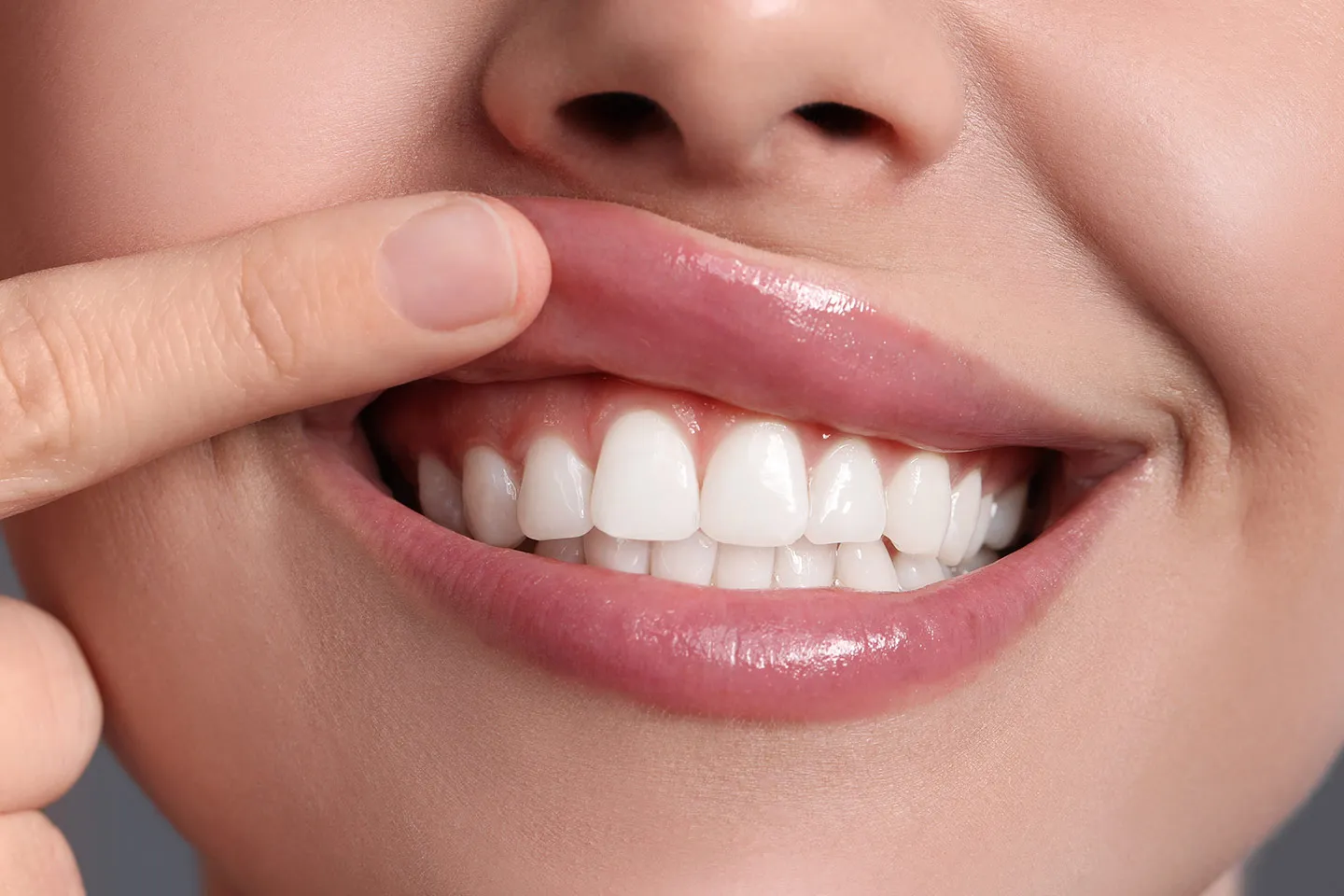
People who are embarrassed about their smile may want to consider gum contouring to improve the symmetry and balance of their smile. The term is synonymous with gum reshaping, and the terms can be used interchangeably. Gum contouring, or reshaping, is a cosmetic procedure that evens out the gum line and may also offer medical benefits. Gum reshaping is available at Desert Bloom Dentistry in Safford and the surrounding area. People who are looking for a simple and effective way of improving their smile may want to consider gum contouring. We can discuss the procedure and help determine if it is a good choice. Call us at (928) 428‑1617 to schedule an appointment.
To schedule your appointment, contact our team at (928) 428‑1617 today.
Most people probably do not think about their gums often except when they floss or are at the dentist’s office. However, for some people, gum tissue can be a real concern. It may be uneven, which causes the smile to look asymmetrical.
The gum tissue may be too high, which makes the teeth look longer than normal. The tissue may also be too low, which makes the teeth look small. According to the National Library of Medicine, the latter effect is known as a gummy smile, and it occurs when the gum line drops 4 mm or more.
Gum contouring offers both medical and cosmetic benefits. In general, reshaping the gum line improves one’s smile and helps prevent future dental issues. The specific benefits associated with this procedure include:
The process of gum contouring typically takes only one office visit. A local anesthetic is applied to numb the area, which makes the procedure virtually painless. Two methods—a scalpel or laser—may be used to remove excess tissue and reshape the gum line. In many situations, the dentist will also remove a small piece of bone at the root of each tooth.
Both methods are relatively quick, although the laser is a bit faster. Using a laser also seals the wound during the procedure, which promotes quicker healing, minimal bleeding, and no stitches. The surgery has permanent results because the gum tissue will not grow back.
There is a recovery process associated with gum reshaping. On the day of surgery, someone should drive the patient to and from the appointment since anesthesia will be used. The patient should rest the entire day to help with healing.
Patients can expect some soreness and swelling around the gums. Discomfort and swelling can be managed with over-the-counter pain relievers such as Tylenol®, Advil®, or Motrin®. Aspirin should be avoided as it may increase bleeding.
Diet should consist of soft, cool foods—applesauce, pasta, eggs, soft vegetables, mashed potatoes, yogurt, and pudding—and avoid crunchy, spicy, or acidic items. Proper oral care is essential; the dentist will provide specific brushing instructions until full recovery, which may take a week or longer.
Gum issues are generally genetic, although certain medications or health conditions can alter gum positions. Excessive gum coverage (“gummy smile”) or recession from periodontal disease may both require reshaping.
Most patients feel no discomfort during the procedure due to anesthesia. Post‑procedure soreness and tenderness are common and manageable with ice packs and pain relievers.
Gum contouring is customized to each patient. Some may need reshaping across an entire arch, while others only require work on a single tooth. Your dentist will design a plan based on your needs and goals.
Coverage varies by plan and procedure. Patients should consult their insurance provider to determine benefits and out‑of‑pocket costs.
Risks are minimal. Rarely, patients may have an allergic reaction to anesthesia or experience minor relapse of gum tissue. Your dentist will review all potential risks during consultation.
Schedule your gum contouring appointment today and achieve a harmonious, balanced smile.